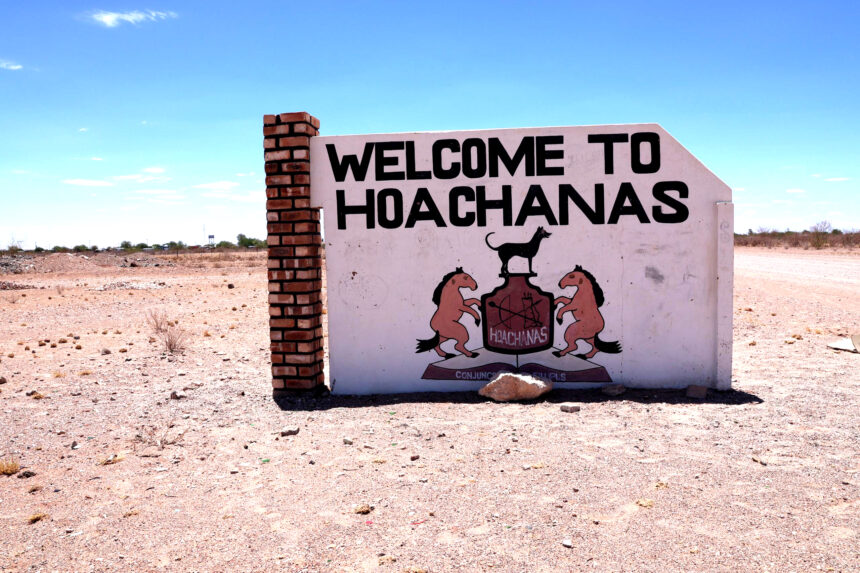Charmaine Boois
MARIENTAL – With the Presidential and National Assembly elections having gone yesterday, residents of rural areas Hoachanas and Stampriet in the Hardap region, have been left wondering if the promises made during political campaigns will finally translate into tangible changes for them.
These villagers, wallowing in poverty, unemployment and a lack of basic services, have become frustrated with the status quo.
In Stampriet, a village surrounded by livestock and crop-farming activities, residents struggle with erratic access to basic resources.
Despite the agricultural wealth of the area, many people face challenges in making ends meet. A major concern voiced by the community is that Stampriet does not have essential amenities such as shops, forcing residents to travel to Mariental to purchase basic necessities.
They also highlighted that schools are located far from residential areas, requiring children to walk long distances, which parents feel is unsafe. With only two schools in Stampriet, some parents are forced to send children to schools in other towns and villages, incurring significant costs in the process.
Another concern of the Stampriet community is the absence of a hospital and local ambulance service. Residents rely on an ambulance called in from Mariental, some 56 kilometres away for emergencies, and a delay in its arrival could mean the difference between life and death. On Saturday, Nampa spoke to Elretha Kamutindi, chairperson of the Stampriet Village Council, who acknowledged these hardships, and put them into perspective.
“Four years ago when we took office, we found the village in the same critical state. The communities are quick to apportion blame, but what do they expect us to achieve in four years that other leaders could not accomplish in 32 years? Yes, we acknowledge the slow pace of development in Stampriet, but I have an answer to that.
We receive resources from the central government, and as leaders, we can only do so much with the little resources we have. We really have achieved some progress in Stampriet,” Kamutindi said.
She highlighted some of the council’s achievements, including the installation of prepaid water meters in households to address the long-standing issue of water access.
She also revealed plans for further development, with the ultimate goal of transforming Stampriet into a town.
However, many residents remain sceptical of the Landless People’s Movement (LPM) administration. They feel the party has done little for them during its four years in power in the region.
Results from the recent special election reflect this sentiment, as LPM lost its dominance in the region, with Swapo taking the lead.
In Stampriet, Nampa also spoke to Klaas Awasab, a resident who has lived in the Hardap region for more than 30 years. Awasab said when Swapo was in power in the region before LPM took over, little had changed. He questioned whether LPM received the same resources from the central government as Swapo did and, if so, whether better outcomes could have been achieved.
“For years, Swapo has been in power, but has anything really changed? If LPM had the same resources as Swapo, would there be a difference, or do both parties just not know how to use resources properly?” Awasab asked.
Meanwhile, in Hoachanas, located 65 kilometres from Stampriet, residents face similar challenges. High youth unemployment, poverty and a lack of basic services remain pressing issues.
Marcus Kooper, director of the local community library in Hoachanas, acknowledged the government’s efforts to bring development to the area. Initiatives such as building a library, agricultural offices and a road connecting Kalkrand and Hoachanas are seen as positive steps.
However, he stressed these efforts fall short of addressing the community’s fundamental needs.
“Yes, they have brought improvements, but there’s still no real change. People still live in poverty, the youth don’t have jobs, and there are no basic services in Hoachanas,” Kooper said.
He also highlighted the lack of consultation between the regional councils and local communities, which he believes stifles development.
“The regional council does not visit communities to conduct proper consultations so they understand what people actually need. This disconnect slows down progress,” he said. He called for the establishment of a village council in Hoachanas, similar to those in Stampriet and Kalkrand.
Such a council, he said, would reduce the need for residents to travel long distances to Mariental for consultations, usually held at the Hardap Regional Council premises. Both Stampriet and Hoachanas are surrounded by small-scale livestock farming and crop cultivation, hinting at untapped potential for economic growth. Yet, residents remain trapped in a cycle of poverty and underdevelopment, with basic services such as healthcare centres, schools and sanitation facilities still lacking.
The absence of infrastructure has left many residents disillusioned. They question whether any political party or candidates understand their plight or struggles and can deliver the change the area desperately needs.
As election day has come and gone, the communities of Stampriet and Hoachanas continue grappling with the same question: Will this time be different?
For years, rural areas in the Hardap region have been overlooked in development plans. Promises by politicians often prioritise urban areas, leaving villages like Stampriet and Hoachanas to their wits.
For now, the residents of Stampriet and Hoachanas can only hope that the newly-elected local authorities will bring about the change they have long waited for.
-Nampa


